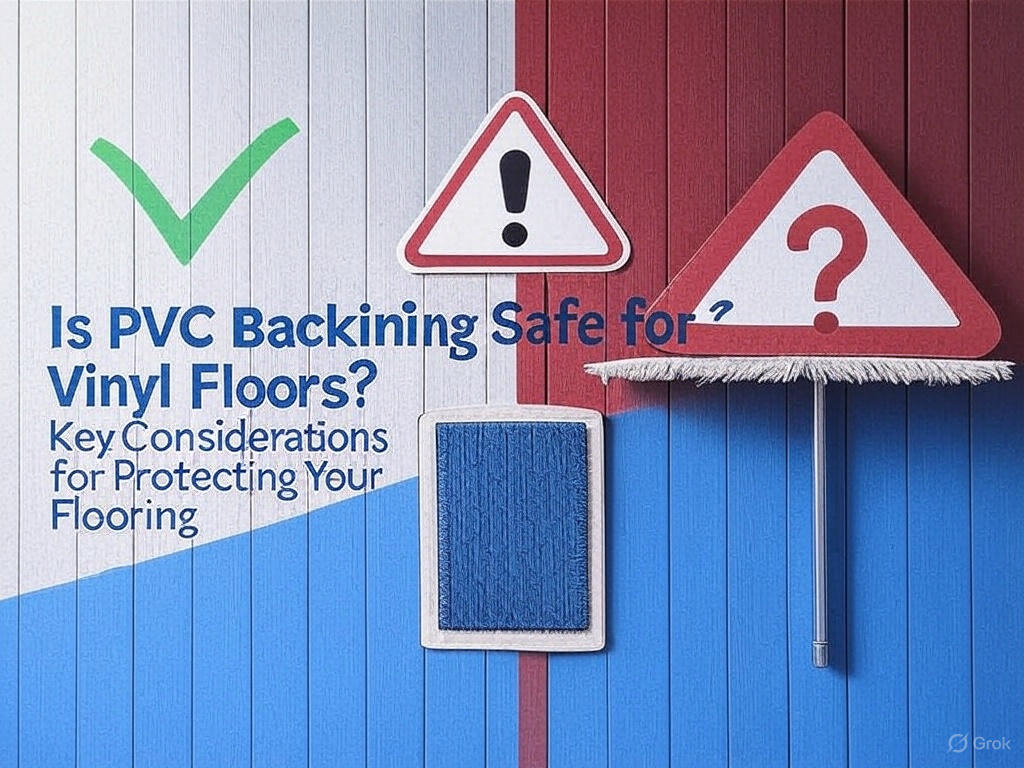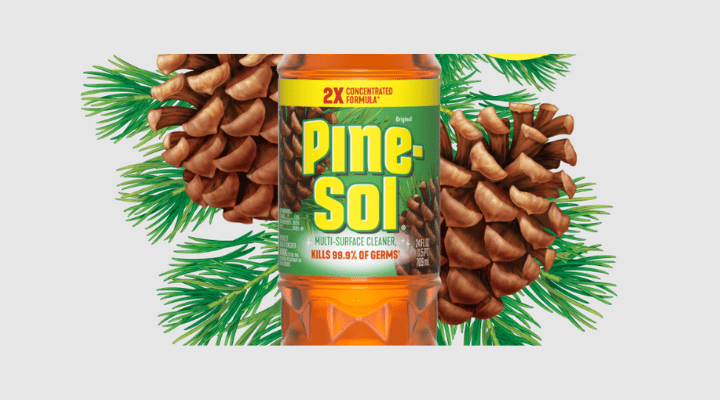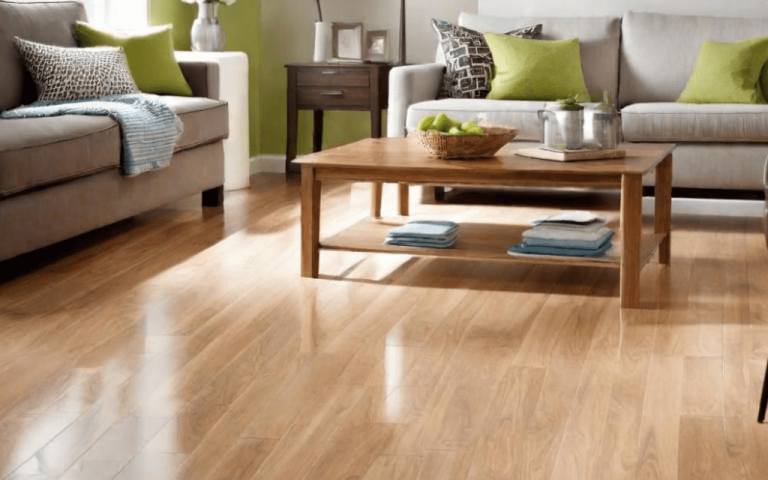Is Pvc Backing Safe For Vinyl Floors
Choosing new flooring can be a big decision! You want something durable, stylish, and, most importantly, safe for your family. This article will thoroughly explore the safety of PVC backing in vinyl flooring, answering your questions and concerns.
Polyvinyl chloride (PVC) is a versatile plastic polymer used extensively in various applications, from pipes and medical devices to flooring. In vinyl flooring, PVC acts as a backing layer, providing stability, durability, and moisture resistance. Think of it as the foundation upon which the decorative vinyl layer sits. Without PVC backing, vinyl flooring would be far more susceptible to damage from moisture, punctures, and general wear and tear. This backing layer is crucial for the longevity and performance of the vinyl flooring itself. The quality and thickness of the PVC backing often directly correlates with the overall quality and price of the vinyl flooring. A thicker, higher-quality PVC backing generally means a more durable and longer-lasting floor.
Why is PVC Backing Used?
The primary reason for using PVC backing in vinyl flooring is its exceptional performance characteristics. It offers excellent moisture resistance, preventing water damage from seeping into the subfloor. This is especially beneficial in areas prone to spills or high humidity, such as kitchens and bathrooms. Furthermore, the PVC backing adds structural integrity to the vinyl, making it more resilient to dents, scratches, and tears. This enhanced durability translates into a longer lifespan for the flooring, representing a significant cost savings in the long run. It also contributes to the flooring’s dimensional stability, preventing it from expanding or contracting excessively with changes in temperature and humidity.
Different Types of PVC Backing
Not all PVC backing is created equal. Manufacturers use different formulations and thicknesses, resulting in variations in performance and cost. Some PVC backings may incorporate recycled materials, while others focus on enhanced sound dampening or improved dimensional stability. Higher-quality PVC backing often features a thicker layer, providing superior protection and durability. Lower-quality options may be thinner and less resilient, potentially leading to premature wear or damage. Understanding these variations can help you make an informed decision when purchasing vinyl flooring. For example, consider a vinyl flooring with a thicker, reinforced PVC backing if you have pets or young children who might put extra wear on the floor.
Health Concerns Regarding PVC Backing
Potential Health Risks Associated with PVC
The primary concern surrounding PVC backing revolves around the potential release of volatile organic compounds (VOCs). VOCs are chemicals that can evaporate into the air, potentially causing respiratory irritation, headaches, and other health issues. Some PVC formulations may contain phthalates, a type of plasticizer that has been linked to potential health problems. However, it’s crucial to understand that modern PVC flooring undergoes rigorous testing and regulation to ensure it meets safety standards. Many manufacturers utilize phthalate-free formulations, minimizing the risks associated with these plasticizers. It’s always best to choose vinyl flooring from reputable manufacturers that transparently disclose their materials and manufacturing processes.
Regulations and Safety Standards
In the USA, the production and use of PVC are subject to various environmental regulations and safety standards. The Environmental Protection Agency (EPA) monitors and regulates the release of VOCs and other harmful substances. These regulations aim to minimize the environmental impact and protect public health. Many manufacturers comply with stringent quality control measures, ensuring their products meet or exceed these established safety standards. This ensures that the amount of VOCs released from their PVC backed vinyl floors remain within safe limits. Look for certifications such as FloorScore, which indicates that a product has been rigorously tested for low VOC emissions, ensuring greater peace of mind.
Comparing PVC Backing with Other Vinyl Backings
PVC vs. Other Backing Materials
While PVC is a common backing material for vinyl flooring, other options exist. For instance, some vinyl floors use felt backing or cork backing. Felt backing offers some cushioning and insulation but is less moisture-resistant than PVC. Cork backing provides excellent insulation and a more natural feel, but may not be as durable or water-resistant. Each type of backing offers different properties; therefore, the best choice depends on the specific needs of the room and your priorities. A kitchen or bathroom, for example, likely requires the superior moisture resistance of a PVC backing, whereas a bedroom might benefit from the added comfort and insulation of a cork backing. The key is to carefully consider your environment and the relevant pros and cons before purchasing any vinyl floor.
Environmental Impact of PVC Backing
The Environmental Concerns Surrounding PVC
PVC production involves the use of certain chemicals that raise some environmental concerns. The manufacturing process can generate air and water pollution, and the disposal of PVC can be challenging. However, advancements in manufacturing techniques and recycling programs have significantly reduced the environmental impact of PVC. Many manufacturers are adopting more sustainable practices, such as using recycled materials in their PVC formulations and minimizing waste during production. Furthermore, responsible disposal methods, such as recycling programs, help reduce the amount of PVC ending up in landfills.
Sustainable Alternatives and Eco-Friendly Options
Several companies are committed to creating more environmentally responsible flooring options. These may include vinyl flooring with recycled PVC content or alternative backing materials that have a lower environmental footprint. When choosing your flooring, look for certifications like GreenGuard Gold, which indicates that the product meets strict emission standards for indoor air quality. There are also entirely PVC-free options, like vinyl flooring made with natural materials such as cork or recycled rubber. However, these are often more expensive and may lack some of the performance characteristics of PVC backed vinyl floors.
Installation and Maintenance of Vinyl Flooring with PVC Backing
Proper Installation Techniques
Proper installation is crucial for the longevity and performance of vinyl flooring with PVC backing. Improper installation can lead to issues such as bubbling, warping, or premature wear. It’s best to hire a professional installer for complex installations or if you’re unfamiliar with the process. This ensures that the flooring is installed correctly, maximizing its durability and lifespan. For DIY enthusiasts, several online resources and tutorials can guide you through the process, offering step-by-step instructions and helpful tips. Accurate subfloor preparation and adhering to the manufacturer’s guidelines are vital for a successful installation.
Regular Cleaning and Care
Regular cleaning and proper maintenance are essential for keeping your vinyl flooring with PVC backing looking its best. Regular sweeping or vacuuming will remove loose dirt and debris, preventing scratches and wear. For spills, immediate cleaning is recommended to prevent staining. Most vinyl floors can be cleaned with a damp mop and a mild detergent. Avoid harsh chemicals or abrasive cleaners, as these can damage the floor’s surface. Regular maintenance not only enhances the appearance of your flooring but also helps to prolong its lifespan. Following the manufacturer’s recommended cleaning instructions will help to preserve the quality and beauty of your flooring.
Long-Term Durability and Value of PVC-Backed Vinyl
Lifespan and Cost-Effectiveness
Vinyl flooring with PVC backing is known for its durability and longevity, making it a cost-effective flooring option. Its resilience to wear and tear, moisture resistance, and relative ease of maintenance contribute to its long lifespan. A high-quality vinyl floor with a robust PVC backing can last for many years, potentially decades, reducing the frequency of costly replacements. When considering flooring options, it’s important to evaluate the overall cost over the lifetime of the flooring, rather than simply focusing on the initial purchase price. PVC-backed vinyl flooring often represents excellent value for money in this aspect.
Safety Considerations for Children and Pets
Safety for Children
The safety of vinyl flooring with PVC backing for children is a common concern. While the VOC emissions from modern vinyl flooring are typically low and regulated, it’s essential to choose products from reputable manufacturers that adhere to stringent safety standards. Proper ventilation during and after installation is crucial to minimize any potential VOC exposure. Regular cleaning and maintaining a clean environment also helps to mitigate any potential health concerns. Opting for vinyl flooring with low-VOC certifications, like GreenGuard Gold, can provide further peace of mind for parents concerned about indoor air quality.
Safety for Pets
Vinyl flooring with PVC backing is generally safe for pets. Its durable surface can withstand the wear and tear from pet paws and claws. However, it’s essential to choose flooring that is resistant to scratches and stains, especially if you have larger or more active pets. Regular cleaning is also recommended to prevent the accumulation of pet hair, dirt, and allergens. While PVC itself isn’t generally considered toxic to pets, always ensure that the chosen vinyl flooring is free of harmful chemicals or additives. Consult your veterinarian if you have concerns about specific materials or allergies.
Frequently Asked Questions
What are the potential long-term effects of exposure to VOCs from PVC flooring?
Long-term exposure to high levels of VOCs can potentially lead to various health issues, including respiratory problems, headaches, eye irritation, and in some cases, more serious health conditions. However, modern PVC flooring typically has very low VOC emissions, significantly reducing the risk. Ensuring proper ventilation during and after installation is crucial, as is choosing low-VOC certified products.
Is it true that PVC flooring can contain harmful phthalates?
Some older PVC formulations did contain phthalates, plasticizers linked to potential health concerns. However, many manufacturers now use phthalate-free formulations to enhance safety. Always check the manufacturer’s specifications and look for certifications confirming the absence of phthalates or the use of safer alternatives. Choosing reputable brands that prioritize safety and transparency is paramount.
How can I choose a safe and environmentally friendly PVC-backed vinyl floor?
Look for products with certifications such as FloorScore and GreenGuard Gold, which indicate low VOC emissions and adherence to stringent safety and environmental standards. Consider brands that are transparent about their materials and manufacturing processes and prioritize sustainable practices, such as using recycled PVC content. Learn more about the different certification programs and what they signify to make an informed choice.
What is the best way to dispose of old PVC-backed vinyl flooring?
Check with your local waste management facilities for proper disposal methods. Some areas offer recycling programs for PVC flooring, while others may require disposal through regular garbage collection. Proper disposal helps reduce the environmental impact of PVC and prevents it from ending up in landfills. Learning more about local recycling programs will ensure you dispose of the material properly.
Are there any alternatives to PVC-backed vinyl flooring that are equally durable and affordable?
Yes, there are alternatives, including vinyl flooring with felt or cork backing, as well as other flooring types like luxury vinyl plank (LVP), which sometimes uses different backing materials. However, PVC still offers a high level of durability, moisture resistance, and affordability compared to many alternatives. Carefully consider your needs and budget when weighing different options.
Can I install PVC-backed vinyl flooring myself, or should I hire a professional?
While some DIY-inclined individuals can successfully install vinyl flooring, it’s often best to hire a professional for complex installations or if you lack experience. Improper installation can lead to problems down the line, potentially negating the cost savings of DIY. A professional installer will ensure that the flooring is installed correctly and will provide warranty support should issues arise.
Final Thoughts
Choosing flooring is a significant decision, and understanding the properties and potential impacts of materials like PVC backing is vital. While some concerns exist regarding PVC’s environmental impact and potential VOC emissions, modern manufacturing practices and stringent regulations significantly mitigate these risks. By choosing reputable brands, low-VOC certified products, and installing your flooring correctly, you can enjoy the durability, affordability, and aesthetic appeal of PVC-backed vinyl flooring while minimizing potential health and environmental concerns. Remember to prioritize responsible disposal methods at the end of the flooring’s life cycle. Ultimately, the best choice depends on your specific needs and priorities, but with careful consideration and informed decision-making, you can find a flooring solution that is both safe and practical for your home. Make sure to explore various options available to you!













